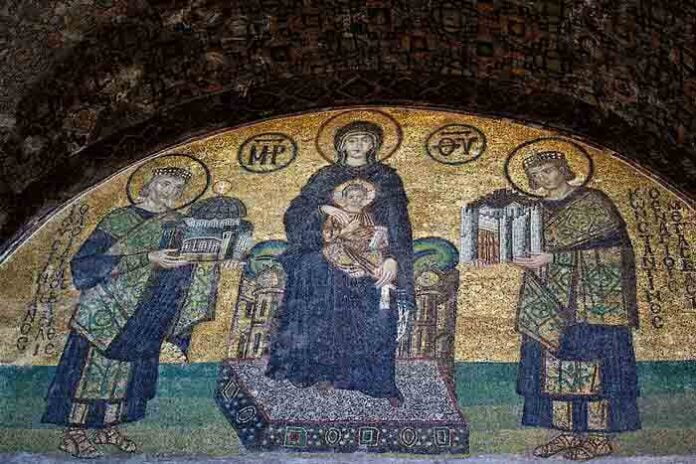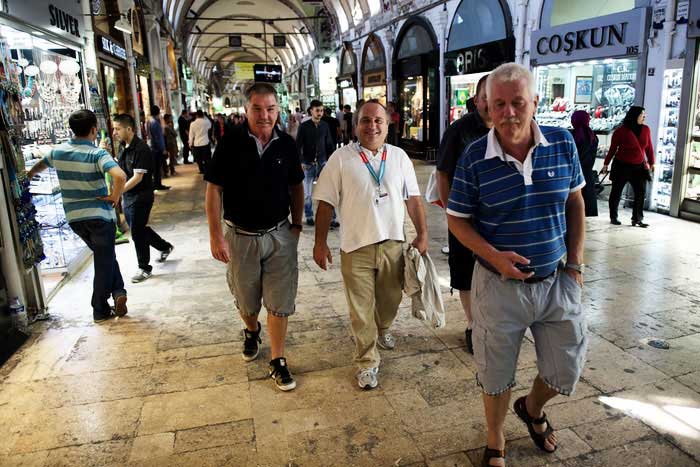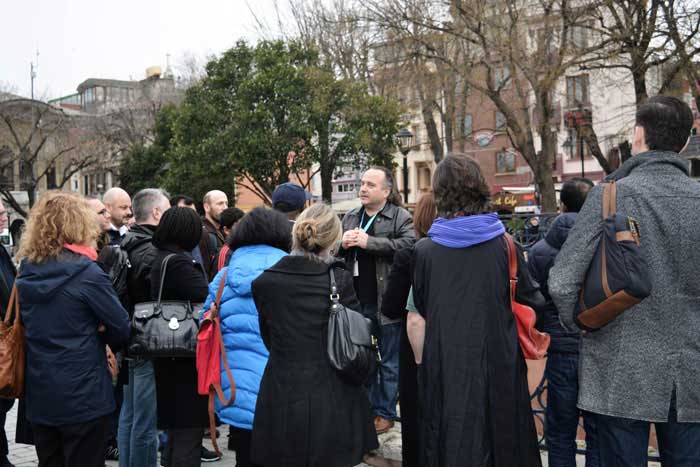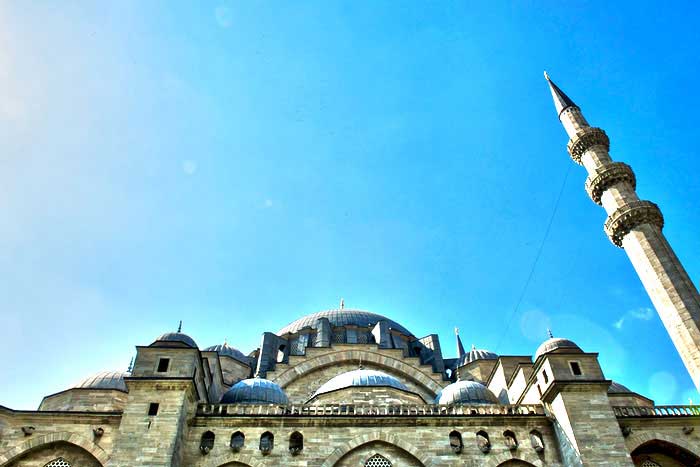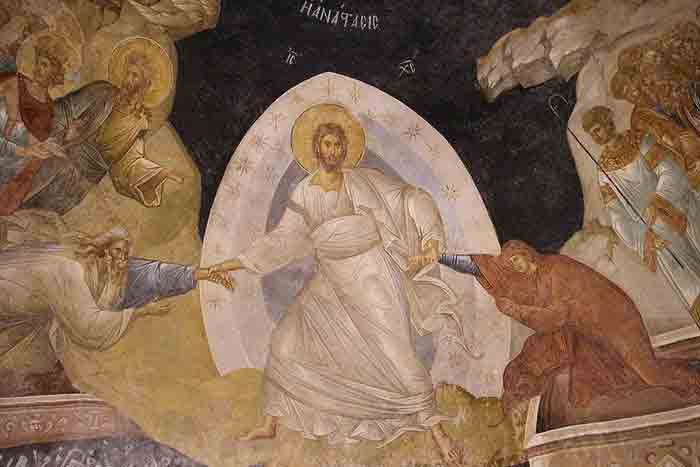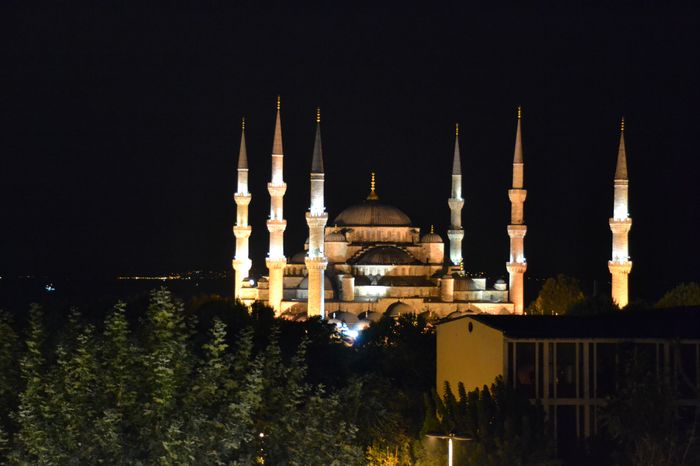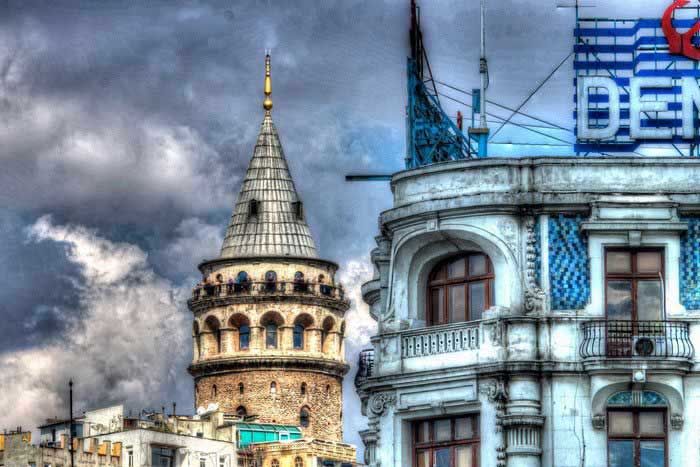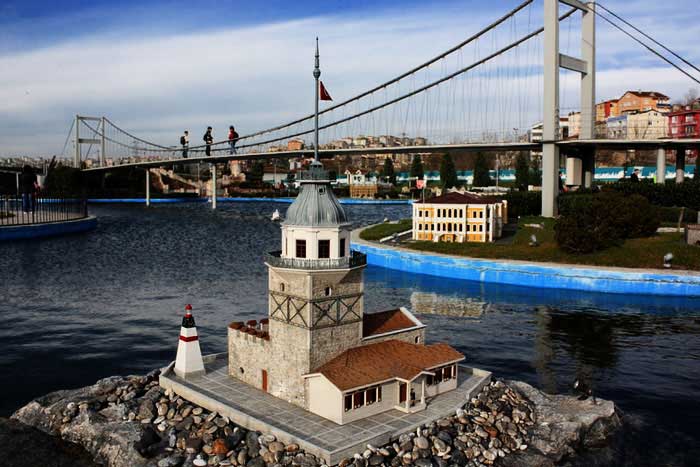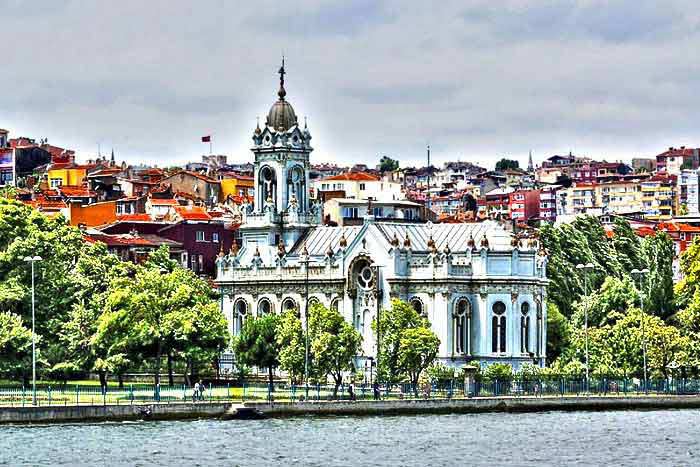Private tour Istanbul, Hagia Sophia – a symbol of tolerance and harmony
Private tour Istanbul can help get an answer of if it is a Church? A Mosque? A Museum?
One thing is sure, though – it’s a place where religions meet. You can see Islamic art and Christian architecture blend blissfully. Hagia Sophia stands as a symbol of Istanbul throughout time. A symbol of timeless majesty!
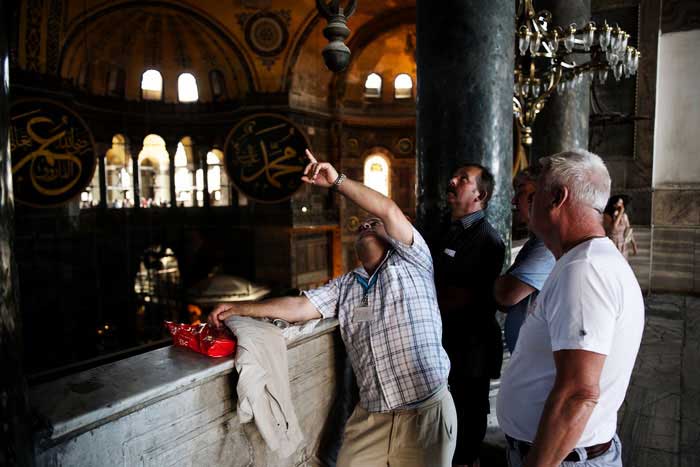
Visit Hagia Sophia (as the Greek know it) or Aya Sofia (in Turkish) or St.Sophia, or simply the Church of Holy Wisdom (as they call it in English). You will find it really enjoyable for all the history, inspiration and beauty it offers.
In answer to the question if Hagia Sophia was a church, a mosque or a museum – it has been in fact all three! We will see all the answers in our city tour Istanbul.
Until the 16th century Istanbul’s most famous monument was the largest enclosed space in the world. For almost a thousand years Hagia Sophia maintained its status as the largest Christian church.
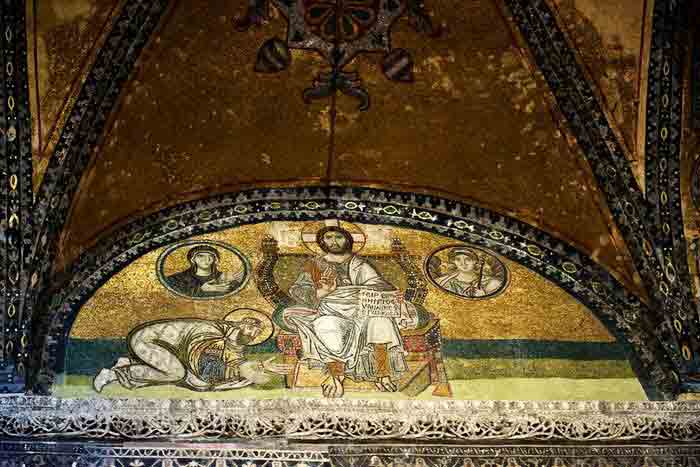
Built at the command of Emperor Justinian in the years 532 to 537, Hagia Sophia was first constructed as a church. Then it became a mosque and now it is a museum. Ataturk, the first president and the founder of modern Turkey, turned it into a museum in 1935. Justinian’s church was ready in less than 6 years. And it reigned as the greatest church in Christendom until the Conquest of Constantinople in 1453.
Mehmet the Conqueror penetrated the city
When Mehmet the Conqueror penetrated the city in 1453, his first official stop was to this overwhelming symbol of an empire that he had conquered. And with his head to the ground, he invoked the name of Allah and declared the great house of worship a mosque. Then people removed the Christian Icons and desecrated the mosaics on the walls. And after that the plaster over the walls. The Muslims then installed Arabic writings from the Koran all over the church. Four minarets appeared and the gold cross on the top of the dome disappeared. Instead of it, there sood a brass crescent to signify that it was now a mosque. It is now as significant to Muslims as it is to Christians.
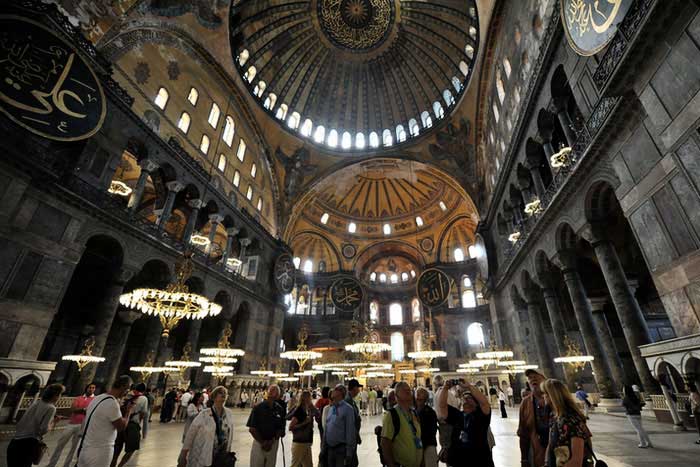
Emperor Justinian chose the two architects of the day: Anthemius of Tralles (Aydin) and Isidorus of Miletus to build it. hus he kept his promise to buld a church like no other. It took 5 years and 4 months for the construction of the Hagia Sophia. It happened in A.D. 537. Then the emperor raised his hands to heaven and proclaimed, “Glory to God who has deigned to let me finish so great a work. O Solomon, I have outdone thee!” What the two architects did, without the benefits of today’s technology, remains unequalled.
Throughout time there have been three churches built on the site
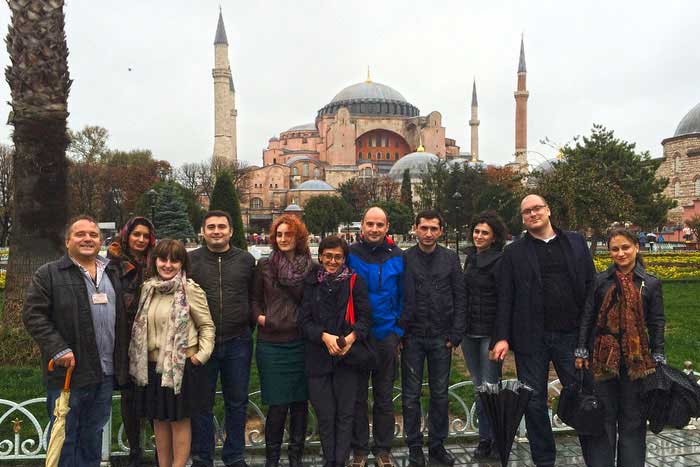
The first church was built in and around 300 AD during the reign of Constantius II but it was burnt down in riots in the city. The second church built on the site was subsequently burnt and destroyed again in 531 AD. The only remains of the second church – a Theodosian church, are some carved reliefs which are on display in a pit at the main entrance of the basilica.
There are three doors leading into the main church. The middle and largest doorway was for the Sultans use only. During your visit of Istanbul for private tour Istanbul, you can easily use that door to get in because we don’t have Sultans anymore. Others would have to enter by the two doors either side of the Sultans door.
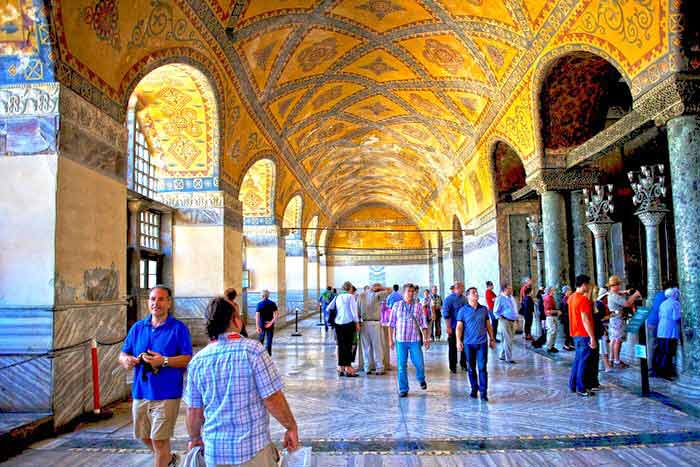
Hagia Sophia, The Sultans doorway
Once through the Sultans doorway the sight that greets you is absolutely breathtaking. And you would have to see it yourself to believe it. Words cannot describe the beauty. This vast, massive, enormous cavernous domed church is overwhelmingly gigantic. It really takes your breath away.
The sight that brought both emperors and sultans to their knees (and it will bring you too on you private tour Istanbul) is a soaring dome that rises 56 m (184 ft.) in height (about 15 stories) and spans a width of approximately 31 m (102 ft.). Light filters through a crown formed by 40 windows and ribs, glittering with the gold mosaic tiles that cover the entire interior of the dome. At its decorative peak (including the side aisles, semi-domes, inner walls, and upper galleries), Hagia Sophia’s interior mosaics covered more than 4 acres of space. At the centre of the space there is a square of marble flooring. Its name is Coronation Square. For it people believe to have been the location of the emperor’s throne, the place of coronation and therefore, in the minds of the Byzantines (or at least the emperor), the centre of the universe.
Several earthquakes and fires
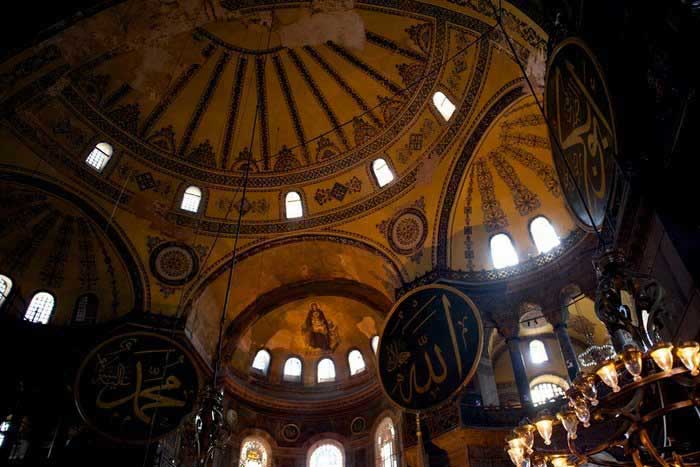
Several earthquakes and fires caused cracks in the massive structure and the vast dome eventually collapsed. Only 2 years after the construction of the cathedral, an earthquake caused the dome to collapse. The new dome was slightly smaller in diameter but higher than the original. Builders supported it with a series of massive towers to counter the effects of future earthquakes. Glass fittings in the walls monitored the weight distribution of the dome; the sound of crunching glass was an early warning system indicating that the weight of the dome had shifted.
Private tour Istanbul, Crusaders destroy Hagia Sophia
In 1204 the Hagia Sophia was sacked and stripped down to the bare bones by the Crusaders; a desecration that robbed the church of precious relics.
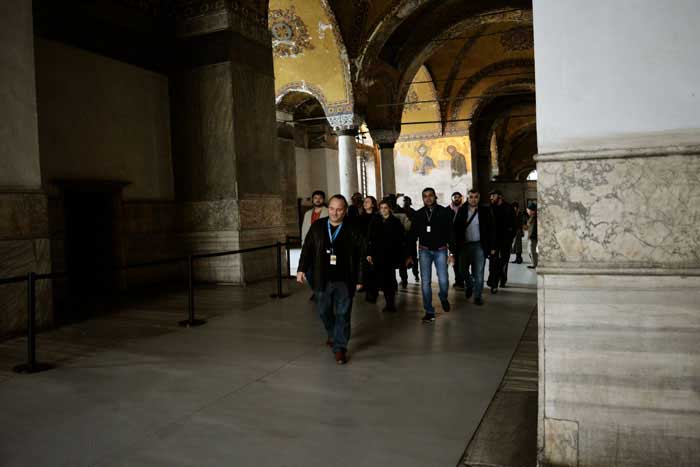
In the years that followed, the building had several adjustments including the covering over of the frescoes and mosaics. That was due to the prohibition of Islam against the representation of figures. Because of Islam again, there had to be a single wooden minaret (later, during restorations in the 16th c., Mimar Sinan replaced it). Also three additional minarets appeared at a later date. The altar needed to slightly go to the right to accommodate a mihrab indicating the direction of Mecca. And a fountain, along with a kitchen, was erected in the courtyard.
When construction of the Hagia Sophia reached the height of a man
According to legend “Private tour Istanbul”, when construction of the Hagia Sophia reached the height of a man. The construction team set out to get a bite to eat. They left their tools under the watch of a small boy. An angel appeared and urged the boy to fetch the men so that they could return to the work of building God’s house. When the boy told the angel that he promised not to leave the tools unattended; the angel promised to keep an eye on everything until his return.
After leaving the site and thus breaking his promise, the boy was never got the permission to return. Of course angel continues to wait for him. Legend has it that the angel grants a wish to all those who successfully complete a 360-degree circle with their thumb in the hole of this wish-worn column.
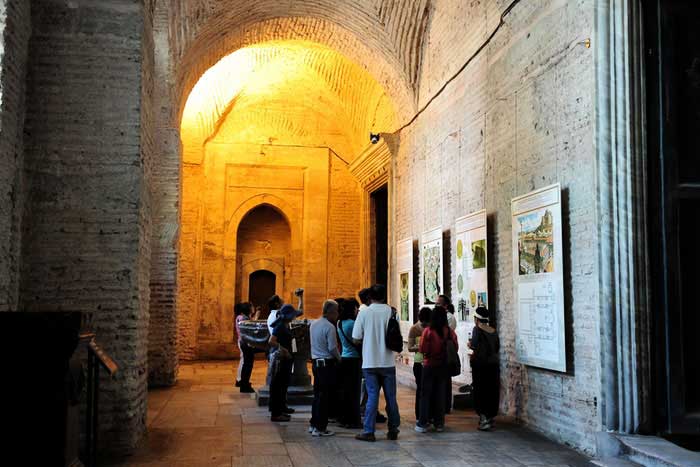
For almost a thousand years, Hagia Sophia was a triumph of Christianity and the symbol of Byzantium. Hagia Sophia is perfect for history and art lovers! It’s an impressive combination of Christianity and Islam.
Is it a church, a mosque, a museum? Or all three…? It is definitely a beautiful monument, a wonder of architecture, an overwhelming structure… A place where religions meet.
Don’t miss to visit, have a look, sense and enjoy the Hagia Sophia with private tour Istanbul or Istanbul tours.
I am a specialist on doing tailor-made tours. Please contact us with the size of your group for a free quote with no-obligation.
Update…
The museum status of the Haghia Sophia changed to Mosque with the order of the Turkish Government on July 24, 2020. It is still open for visitors except for the praying times. You have to take your shoes off when you are entering the main part of the building.
Although images of people are not allowed in the mosque, we still can see Virgin Mary and baby Jesus. Researching for a second floor of Haghia Sophia Museum is also being carried on.

